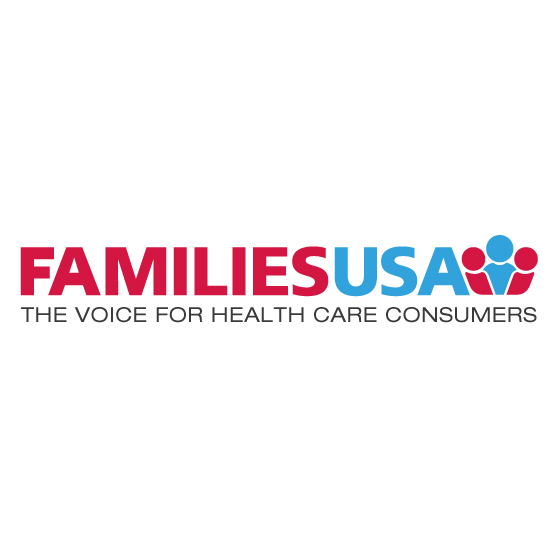
Marketplace Final Rule Sets Major Hurdles to Coverage
06.27.2025
UPDATE: This rule is temporarily blocked from going into effect due to an August 22 injunction.
The Trump administration finalized a dangerous rule that will make it much harder for people to enroll in ACA marketplace plans and will raise the price of ACA coverage. HHS estimates that over 1.8 million people will lose coverage due to the rule. Some of the changes are temporary for 2026 under the rule — but don’t let that fool you: the proposed Congressional budget package would make them permanent. Though the rule mainly affects people who buy individual or family coverage offered under healthcare.gov or state-based marketplaces,1some of the provisions in the “One Big Beautiful Bill Act” go further and will also raise costs for people who get their coverage through their employers.
In other areas, noted below in italics, states have discretion to mitigate the harm — so it will be important for advocates and state officials to make improvements at the state level.
Here’s a quick summary of the rule.
The provisions that do not sunset and that are permanent (unless another administration or Congress changes them) are as follows:
- Deferred Action Childhood Arrivals (DACA) are not eligible for marketplace plans or for Basic Health Plans. (45 CFR 155.20)
- Premiums and the maximum annual limit on cost-sharing (that is, the most a seriously ill person could be charged in cost-sharing) will increase more each year because of a change in the annual growth formula. The increase in maximum out-of-pocket costs affects people beyond the marketplaces, as it also applies to plans that individuals purchase outside of the marketplaces and plans provided by employers. Premium costs for marketplace plans could skyrocket even further if Congress fails to extend enhanced premium tax credits this year, creating a double whammy for marketplace consumers from the impact of the rule and congressional inaction. (45 CFR 156.130(e))
- Marketplace plans (as well as other ACA-compliant health plans sold to individuals or offered by employers) can decrease their “actuarial value” (the percentage of typical costs that they cover) by as much as 4 percentage points, which means less coverage and increased cost-sharing for consumers. (45 CFR 156.140(c))
- People who got behind in their premium payments in a prior year can be denied coverage the next year. Further, the first premium they pay in the new year can be attributed to their past debt — if permitted under state law. (45 CFR 147.104(i)). This change goes beyond marketplace coverage. Under the new rule, issuers could deny coverage to individuals or employers for such failures to pay past premiums. However, states, insurance regulators, and insurers can work to set more protective rules and policies. States should work to ensure that people who are late paying their November or December premiums don’t get trapped and miss the enrollment window when they try to initiate coverage for the following year.
- The rule attacks gender-affirming care by creating new harmful, politicized and non-medical definitions designed to prevent access to medically necessary care. The rule creates the term “sex-trait modification procedures,” and defines it as “a pharmaceutical or surgical intervention that is provided for the purpose of attempting to align an individual’s physical appearance or body with an asserted identity that differs from the individual’s sex.” The rule then prohibits coverage of “sex-trait modification procedures” as an essential health benefit. However, states can still mandate coverage of these procedures under state laws, with or without cost-sharing. If states do that, they must defray the cost of the coverage in marketplace plans — the portion of premiums and cost sharing attributed to “sex-trait modification” is not eligible for tax credits or cost sharing reductions – but that cost, as noted in the rule’s preamble, is minor. (45 CFR 156.115(d), 156.400, and 155.170(b)).
- Starting in the 2027 plan year, the annual open enrollment period must end by December 15 and last no longer than 9 weeks. The preamble states that open enrollment in the federal marketplace will be November 1–December 15, 2026 for coverage beginning in January. State-based marketplaces have some flexibility to set a different open enrollment period of up to nine-weeks, as long as it ends by December 31; and under existing rules, states continue to have flexibility over special enrollment periods. (45 CFR 155.410 (e))
- Beginning in 2026, people eligible for cost-sharing reductions will no longer be automatically moved from a bronze to a silver plan at the same or a lower price — that is, the federal marketplace will not automatically move them to a plan with the same provider network that covers more of their costs. However, state-based marketplaces retain some flexibility, with approval by the HHS Secretary, to create re-enrollment hierarchies that might do this. (45 CFR 155.335(j) and existing rule at 45 CFR 155.335(a))
- Beginning in August, people will have a shorter time — 90 days, with no automatic 60-day extension — to document that their incomes have decreased and they are therefore entitled to higher advance premium tax credits, when their tax data from the previous year showed a higher income or a previous year’s tax data is unavailable. Note, however, that people may still be able to get case-by-case extensions. (45 CFR 155.315(f))
- In one of the very few constructive policy changes included in this rule, brokers, agents, and web-brokers can be terminated if a “preponderance of evidence” indicates that the broker or agent likely violated rules. (The rules are designed to properly inform consumers of their plan choices and to help them apply for advance premium tax credits, if appropriate). (45 CFR 155.220)
In addition to the impacts stemming from permanent changes included in the rule, people with low incomes will have a tougher time enrolling in the marketplace in 2025 and 2026 due to a number of provisions that are temporary in the rule but could be made permanent by Congress. Most of these are included in the House-passed version and/or the Senate-proposed version of the budget bill.
These changes fall particularly hard on states that have not expanded Medicaid to people with incomes up to 138 percent of the poverty level (Alabama, Florida, Georgia, Kansas, Mississippi, South Carolina, Tennessee, Texas, Wisconsin, and Wyoming). The Trump administration alleges that these provisions are needed to address agent/broker fraud, in which people’s enrollments were switched or they were enrolled in plans without their knowledge. But all of these changes will actually make it much harder for people to obtain coverage and will leave many low-income people uninsured:
- People with incomes below 150 percent of poverty will not be able to enroll in the marketplace year-round — the special enrollment period that allows them to do so will be eliminated. This change begins in August 2025, taking away many people’s opportunity for coverage this year, and lasts through plan year 2026. (45 CFR 155.420(d)(16))
- People who seek advance premium tax credits claiming that their income is over 100 percent of poverty, but for whom IRS data from the previous year showed income under poverty, will need to verify their current incomes. (45 CFR 155.320(c)(3))
- People who fail to file tax returns that reconcile the premium tax credits they received in a previous year with IRS data will not be eligible for advance premium tax credits. (45 CFR 155.305(f)(4))
- If tax data to verify someone’s income is unavailable, for instance because they started a new job or had a change in family composition, exchanges would no longer be able to accept the applicant’s attestation of income. (45 CFR 155.320(c)(5))
- People who, due to their low incomes, are eligible for $0 premium coverage will have to initially pay a $5 monthly premium when they automatically re-enroll until they confirm their eligibility for $0 premiums. State exchanges do not have to follow this requirement. (45 CFR 155.335(a) and (n))
- People who underpay premiums even by small amounts can be disenrolled by insurers. For 2025 and 2026, they must pay at least a set percentage of their net premiums after premium tax credits, as set by the issuer or the exchange, to remain enrolled. States and issuers have some flexibility to set this threshold.
- (45 CFR 155.400(g)) For 2026, the federal exchange will require verification that people are eligible for a special enrollment period. State exchanges do not need to follow this rule. (45 CFR 155.420(g))
Advocates and state officials can work to prevent more widespread harm. They can educate Congress on the need to extend premium tax credit enhancements, now set to expire at the end of this year. They can educate Congress now on how these enrollment hurdles — and the prohibition on marketplace coverage for DACA recipients — will leave people uninsured. Where there is state flexibility, they can work for procedures that are as consumer-friendly as possible. As enrollment begins November 1, all hands will be needed to educate people about how to enroll in and renew marketplace coverage — especially since navigator programs that do this work have experienced major funding cuts. Families USA stands ready to support state advocates in this critical work — please reach out if you want to talk in more detail about what we can do together to support people obtaining and maintaining coverage in your state.
Endnotes:
1. See Table 16 in the final rule, https://public-inspection.federalregister.gov/2025-11606.pdf




